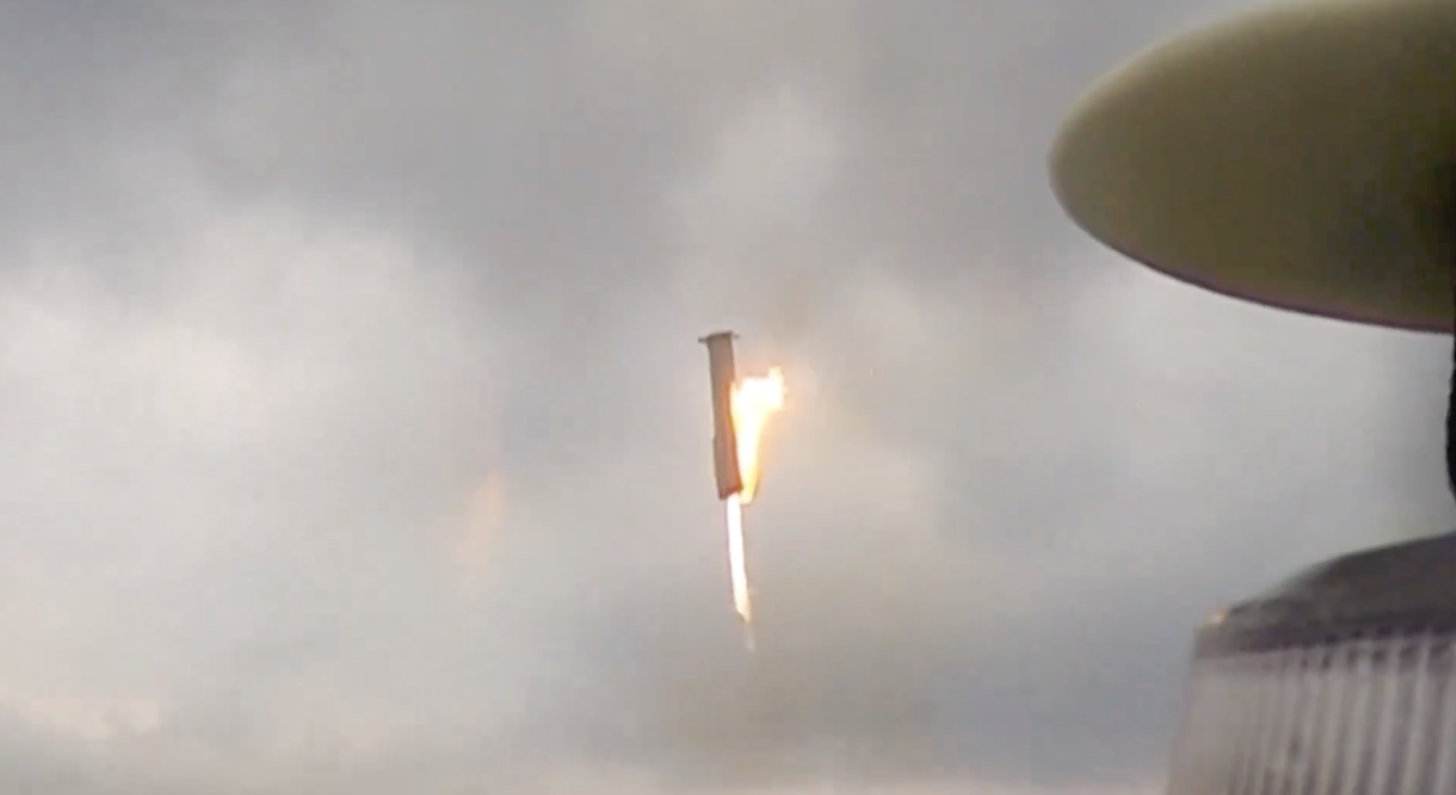
SpaceX's Starship rocket as it rises to the skies during IFT-4. Image: SpaceX/X
In a live stream on X this weekend, Elon Musk continued to share details for SpaceX's fourth Starship test flight and future missions. Starship is the world's largest rocket, and its full stack lifted off for the fourth time in Texas last week. This was the fourth Starship test flight, and it was also the most successful test to date since both the booster and the upper stage spacecraft were able to softly splashdown in the ocean. According to Musk, ahead of flight five, SpaceX will add beefier heat shield tiles on the rocket, and the next flight could take place as soon as next month.
SpaceX Is Adding Beefier Heat Shield Tiles On Starship Ahead Of Flight 5 Says Musk
The fourth Starship test flight was the second such launch in 2024, and it sped up the turnaround time between launches. SpaceX had to deal with the devastating impact of the first test on the launch pad last year, which resulted in a detailed regulatory process that delayed the second flight. Now, with these hurdles behind it, the firm can rapidly conduct test flights to test its technologies and gather data.
Consequently, Musk believes that the fifth Starship test flight will take place in a month. Speaking with viewers on an X livestream, the executive shared that the "next launch, Starship launch is probably in about a month." A key reason behind this long timeline is Starship's heat shield. As is the case with other spacecraft, Starship's heat shield is one of its most complex components. SpaceX uses thousands of tiles to build the heat shield. According to Musk, before the next flight SpaceX will upgrade the rocket's heat shield tiles.
One regular problem that Starship has faced throughout its testing history is the heat shield tiles falling off. These tiles come loose during flight and while the rocket is on the ground. Musk shared that SpaceX plans to add an additional layer under the tiles to keep the ship safe during re entry in case its tiles fall off.

The Super Heavy as it descends to the water for its soft splashdown. Image: SpaceX/X
"We have to take, we're gonna replace the whole heat shield on the ship. So the new heat shield tile is about twice as strong as the ones that were on the last flight," shared Musk. "So, um, and we wanna put an. .an ablative secondary structure, like basically ablative protection behind the tiles so that if a tile cracks or come loose, it doesn't cook the rocket," he added.
The new tiles are "about twice as strong, or hopefully half as likely to crack or come off," and SpaceX tested the secondary ablative material in the fourth flight in the areas where the heat shield tiles were deliberately removed. This material is "like a silicone, felt ablative," which is not "good for reuse" but keeps the ship and its inhabitants safe in case the tiles fall off during or before reentry.
According to Musk, his plans to build a self sustaining city on Mars need to get to a point were "if the ships from Earth stop coming for any reason, that the Mars city does not die out." As for the first flight to Mars, "within three years" is a reasonable estimate.
Since Earth and Mars only align every two years, a viable option could be to "send a few ships on the first Mars rendezvous" to "confirm that they can land well, and then crank it up from there, then, you know go to I don't know twenty or thirty ships in the second rendezvous, a hundred on the third and try to get to a thousand ships going to Mars every rendezvous, every two years as quickly as possible," speculated Musk.
As for the fifth flight, Musk reiterated that SpaceX plans to catch the booster with the launch tower. "I think Mechazilla's got a decent chance of catching the rocket, probably I don't know 50% chance," he said. Elaborating on the booster's return profile, he revealed that when "the booster will come back, it will have an impact point that's out to sea. So it'll have to steer itself towards the tower with the catch arms, and, uh, if anything is, if the booster detects that anything's wrong, it'll suicide itself into the ocean. If things are looking good, it'll steer over to the tower and the arms should be able to grab it."


 TheCoinrise Media
TheCoinrise Media Thecoinrepublic.com
Thecoinrepublic.com Optimisus
Optimisus CryptoPotato_News
CryptoPotato_News DogeHome
DogeHome BlockchainReporter
BlockchainReporter Optimisus
Optimisus TheCoinrise Media
TheCoinrise Media






















